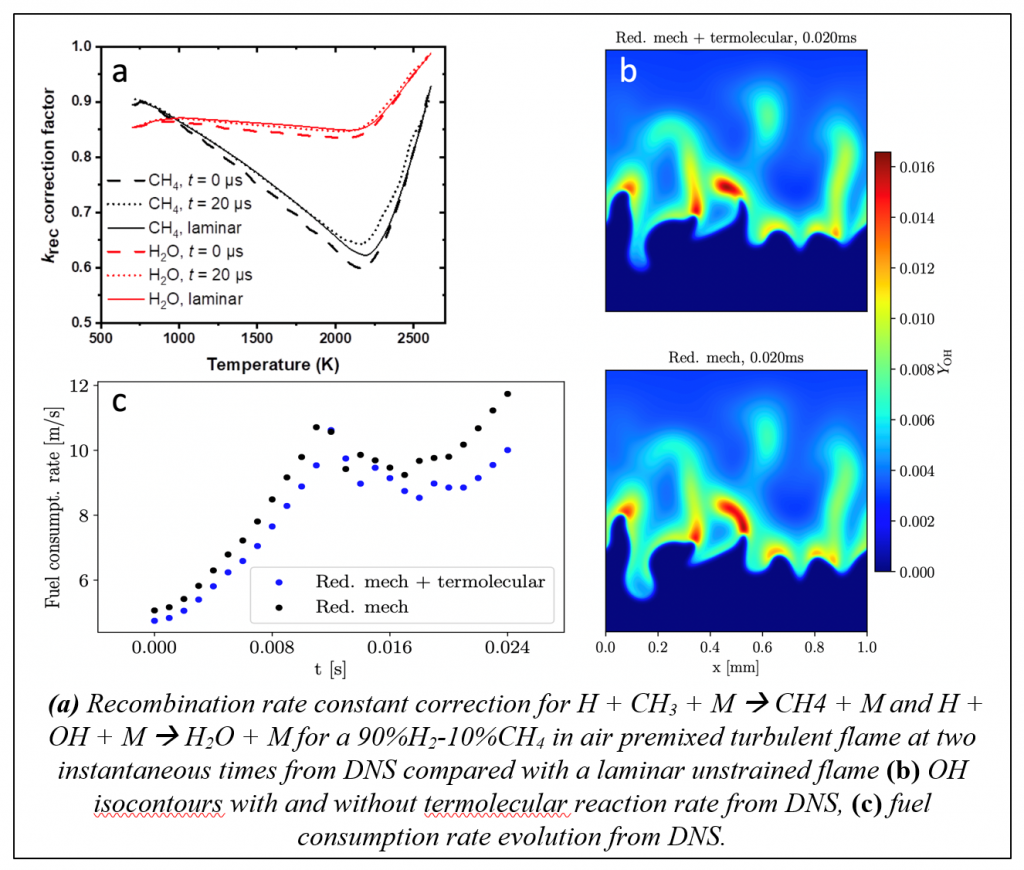Chemical reactions give rise to nascent products, termed non-equilibrium (NE), whose energy distribution does not correspond to that of either the reactants or the bath. Such NE product ensembles have different effective reactivity relative to their thermal equivalents, thereby impacting important macroscopic quantities in a complex reactive system. NE products can have enough energy to dissociate promptly prior to thermal stabilization, or incipient adducts can react with other species while collisionally cooling. Large temporal and/or spatial gradients in composition or temperature generated at the continuum scales also create ephemeral NE ensembles by inducing fast transport processes. These arise because the characteristic timescales of energy transfer of the various molecular energy modes (translation, rotation, vibration) differ substantially from each other and because steep spatial gradients can transport hot and cold ensembles short distances of just a few tens of mean free paths away from each other. The interplay of transport and NE populations is a fundamental scientific phenomenon rooted in the Boltzmann equation. The emergence and effect of molecular NE caused by large gradients generated at the continuum macro-scale requires the formulation of new phenomenological non-equilibrium kinetic models and a multiscale data-driven framework to bridge myriad scales: from the atomic to the mesoscopic and up to the continuum scale. The challenge is to maintain the microscopic fidelity across these scales in a computationally tractable manner.
Our research objective is to understand how NE chemical processes affect the behavior of complex systems, and to create multi-scale bridging models with the assistance of data-driven machine learning (ML) methods to describe them. In particular, we are studying NE processes arising due to large temporal and/or spatial thermal and composition gradients which induce fast transport, and how these effects compare to homogeneous reaction kinetics. A variety of chemistry-induced NE effects in homogeneous systems at the microscale have been studied and shown to have significant impact on oxidation kinetics in a variety of contexts. These studies have demonstrated the effect of NE product energy distributions on subsequent reactions’ rate coefficients and branching ratios. They have also shown how NE reaction cascades develop and thermalize under different conditions.
We have begun construction of a new multi-scale data-driven framework comprised of the following elements: (1) reaction cross-sections, derived from ab initio chemistry calculations (TST/QCT/ME), to be used as input to mesoscale simulations; (2) a mesoscale molecular method, Direct Simulation Monte Carlo (DSMC), newly extended to statistically treat nonequilibrium transport processes coupled with NE chemistry in the continuum regime; and (3) direct numerical simulation (DNS), to calculate turbulent reacting continuum flows, with an extension to treat nonequilibrium effects using a multi-temperature phenomenological model derived from coarse-graining microscopic models. The DNS approach solves the continuum near-equilibrium Navier-Stokes (NS) equation, resolving turbulence and chemical scales from microns-cm and from ns-ms on petascale supercomputers. DNS is used to simulate turbulent flows and shocks that provide realistic time-varying thermal and composition gradients across which NE occurs. DNS is also used to validate NE phenomenological models derived from mesoscopic DSMC results in complex flows.
